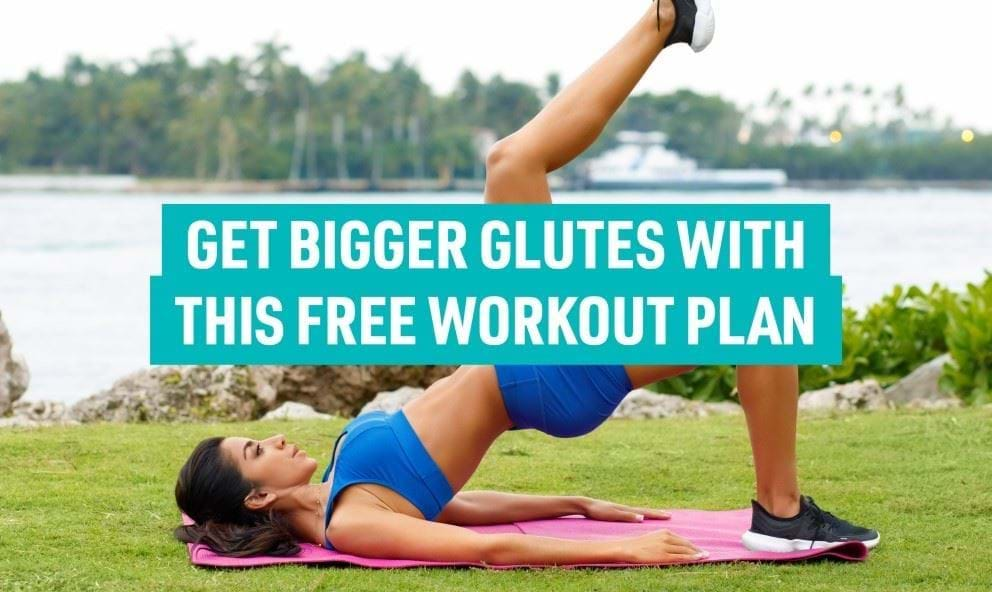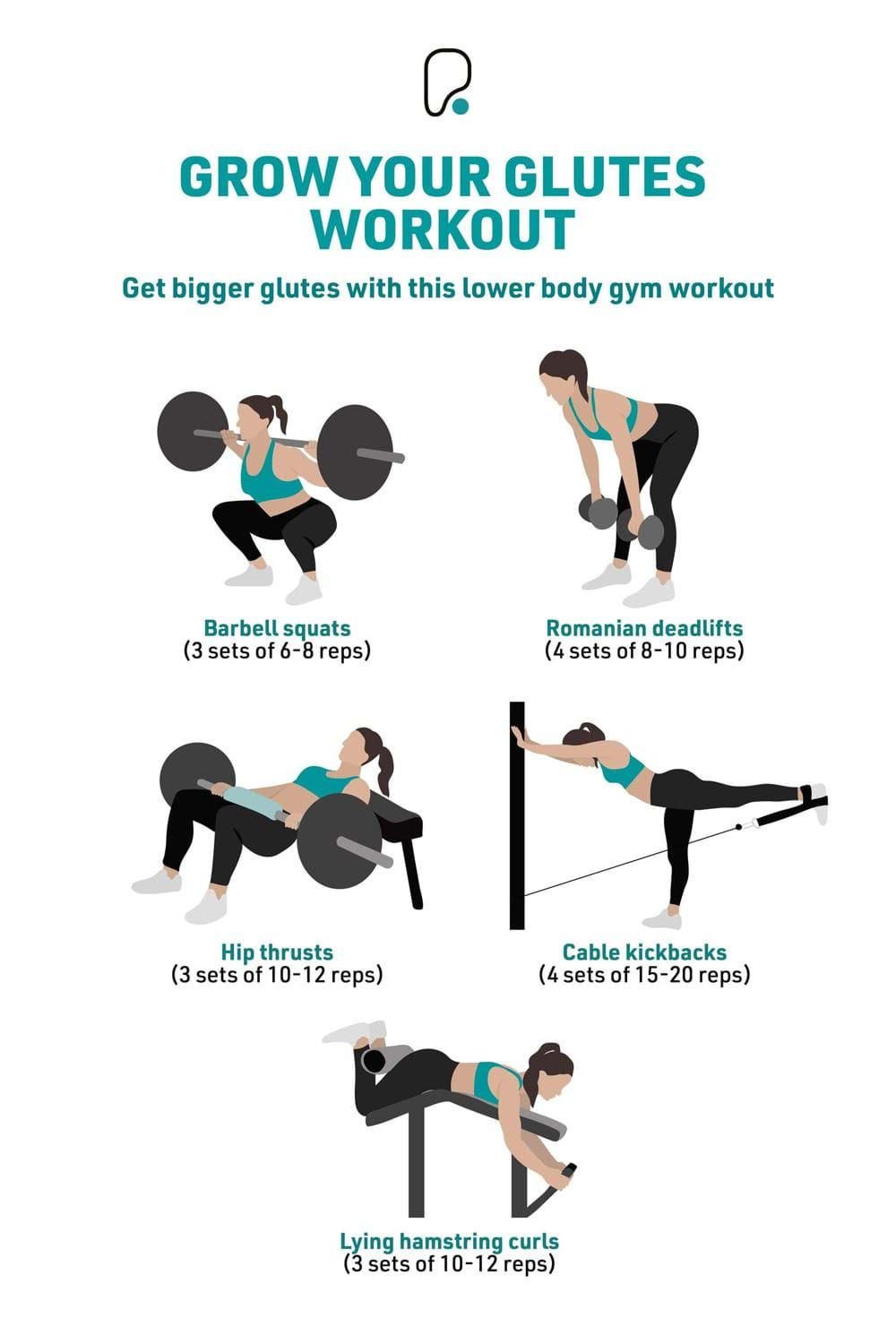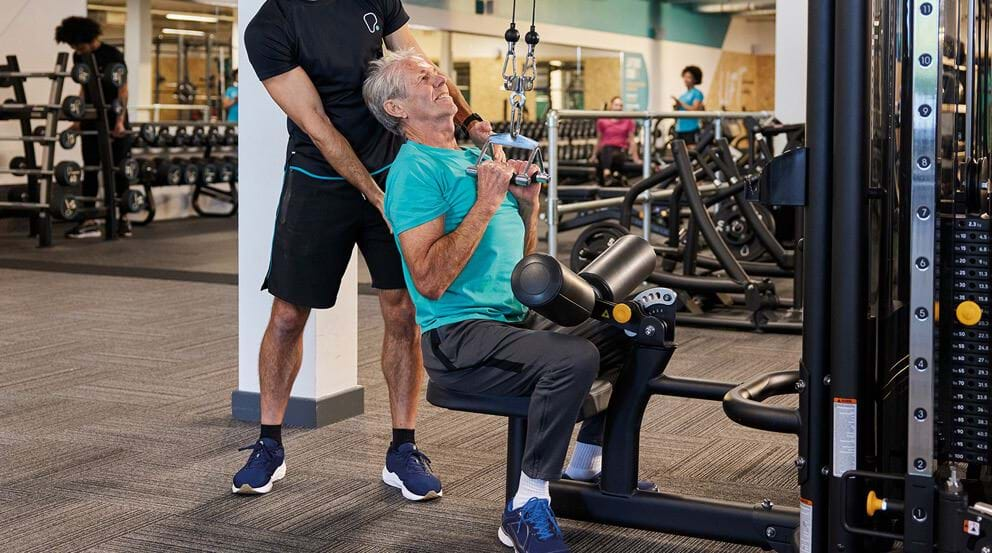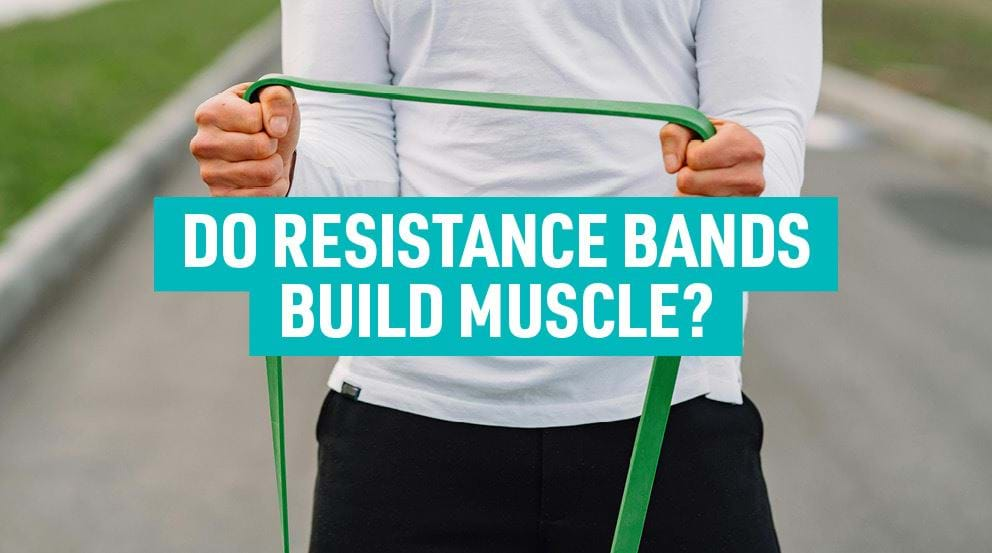Get Bigger Glutes With This Free Workout Plan

Wondering how to grow your glutes? You're not alone -- in fact, this is one of the most common questions PureGym Colchester based Personal Trainer Hannah Kerridge gets asked.
Here, she shares her top tips for building a bigger bum, her favourite bum building exercises, and a free workout plan with the best bum exercises to try.
Top Tips To Grow Your Glutes
There is no magic secret formula when it comes to building bigger glutes, but if you're willing to work hard, be consistent, and patient, it's an achievable goal. It can take months to make a visible difference, so training efficiently is key. These tips will help to make your training routine and workouts more effective for growing your glutes.
Resistance training
While fat plays a part in the size of your bum, when people talk about getting a bigger bum they typically are referring to increasing the size of their gluteal muscles, and resistance training is key for this.
Resistance training or strength training creates tiny tears in the muscles, which sounds scary but is actually a crucial part of increasing muscle mass. The body repairs these tears by building new muscle tissue, which increases the size of the muscle over time.
Consistency
While it can be tempting to change your workout each week to include the latest exercise you've seen online, it's much more beneficial to keep your workouts consistent, with the same exercises performed each week.
Following the same workout makes it easier to progressively overload the glutes by increasing either the volume, weight, or intensity, to ensure the glutes are challenged enough to cause these micro tears each week.
It's recommended to stick to the same workout plan for at least six weeks before making any changes, as this allows for any neurological adaptations to occur. You can continue with the same programme longer than six weeks if its working, or swap out some exercises if you find you're not making much progress.
Volume
If glute growth is a goal, you need to make sure you are training with enough volume to trigger growth. Doing one set of hip thrusts a week won't cut it!
It is generally recommended to train muscle groups at least twice a week to increase mass. Glutes can be notoriously stubborn, so I recommend training glutes at least two to three times a week. This allows for plenty of volume, while still having enough rest and recovery.
Depending on how often you work out, you might need to work your glutes as part of a larger workout, for example in your leg workout or as part of a full body workout, so that you can hit you're your glutes at least twice a week without neglecting other muscles.
Examples of how this could look are:
3 day split for glute growth
- full body (inc glutes
- leg + glutes
- upper body
4 day split for glute growth
- leg + glutes
- upper body
- glutes
- full body
5 day split for glute growth
- legs + glutes
- upper body
- glutes
- upper body
- legs + glutes
Quality over quantity
While volume is key to glute growth, quality over quantity is more important. It's more effective to train at a high intensity, weight weights that are challenging, using correct form and good range of motion, than to do half reps with poor form or using weights that isn't challenging. Using a full range of motion with good form ensures the correct muscles are being worked.
Once you know your desired rep range, choose a weight that takes you close to failure within this range, while still allowing correct form. For example, if your rep range is 10-12, you shouldn't be able to do more than 13-14 reps while maintaining correct form.
Rest and recovery
When your goal is muscle growth, it can be tempting to hammer out as many workouts as possible but this is actually detrimental to your goal. Your muscles actually grow in the recovery phase, so skipping rest days can prevent your body from being able to rebuild the muscle. Aim to get at least 48 hours rest between each glute workout to allow enough time for recovery.
Nutrition
Building muscle is energy intensive, which means you must be enough food to grow your glutes! Getting plenty of protein means your body has the amino acids needed to help repair and rebuild the muscles, however your overall food intake is also important.
To gain noticeable size and strength, you'll benefit from eating a slight calorie surplus -- a process known as bulking which we cover here. You can build bigger glutes while eating at maintenance, or if you want more definition but not size or you have significant body fat to lose, you may want to eat at a slight calorie deficit.
What Exercises To Include In A Gym Workout Plan For A Bigger Bum
The most efficient way to grow your glutes is combining a mixture of compound exercises (multi-joint movements that involve several muscles groups at once) and isolation exercises (movements that work just one joint and muscle group). This approach allows you to maximise volume on the glutes, which is key to growth!
The best compound exercises for bigger glutes
Squats. Squats work every muscle in the lower body, as well as the core. Adopting a wider stance, like the sumo squat, will help to target your glutes even more.
Romanian deadlifts. RDLs are a posterior chain movement that strengthens the hamstrings, glutes, and lower back. This is one of the best ways to load the hamstrings and glutes, making it an ideal exercise for glute gains.
Bulgarian split squats. Bulgarian split squats are a unilateral version of the squat where the back leg is elevated. This is a challenging exercise that builds strength, balance, mobility, and can help to build a bigger bum! Leaning forward to create greater hip flexion helps to activate the glutes even more.
Step ups. Step ups are one of the best big bum exercises there is, and as a unilateral exercise, step ups can help to iron out muscular imbalances between the two glutes. When performing step ups, place all the weight in the elevated foot (rather than pushing off from the floor), hinging forward at the hip, and moving slowly to increase time under tension, will help to ensure you are recruited the glutes efficiently. It's better to start on a small step and really focus on glute mind-muscle connection than to use momentum and other muscles to step up on a higher platform.
The best isolation exercises for bigger glutes
Hip thrusts. Hip thrusts are great for targeting the glutes, while also strengthening the quads and hamstrings. This exercise can easily be loaded by placing a weight on the hips. It's important to avoid over arching the back when performing this exercise, as that means the lower back muscles will take over instead of the glutes. Imagine tucking your pelvis towards the ceiling and pulling your belly button towards your spine.
Glute bridges. Glute bridges have a similar movement pattern to the hip thrust but have a smaller range of motion. This is a great alternative to hip thrusts if you struggle to maintain a neutral spine, as the reduced movement gives less opportunity to overextend the back.
Glute kickbacks. Glute kickbacks work all three gluteal muscles and can help to build a fuller bum. While you'll be unable to move as much weight with kickbacks as other exercises, all the movement comes from the glutes.
Good mornings. Like deadlifts, good mornings are a hip hinge exercise and can help to strengthen the glutes, hamstrings, and lower back. They can be a good addition to any glute focused workout plan.
What Reps Are Best For Glute Growth?
A moderate rep range (8-12 reps) is commonly used for hypertrophy training and is seen as the most effective rep range for muscle growth. However, I recommend a mixture of rep ranges in your training programme in addition to a moderate rep range:
Low rep range (4-8 reps). Lifting very heavy, for low reps, is beneficial for glute work as it recruits and activates a higher number of muscle fibres, exposing them to heavy load, which stimulates growth. This rep range is also an efficient way to build strength, which allows higher weights to be lifted even at other rep ranges, exposing the glutes to more load.
High rep range (12-15 reps). Using a higher rep range can increase muscular endurance, allowing you to lift more to expose the glutes to greater volume. It also promotes metabolic stress, which can lead to muscle growth. This types of rep range is particularly useful for isolation movements such as glute kickbacks or abductors.
Whatever rep range you are working to, you should choose a weight that takes you close to failure within this rep range while maintaining good form. For example, if you’re aiming for 4-8 reps, you should only be able to perform 8-9 reps maximum.
Example Bum Building Workout Plan
This is a glute focused leg day workout that will help to increase lower body strength and get those glute gains. You can repeat this throughout the week or alternate it with another glute focused workout. Each week, aim to increase the reps (within the rep range) or weights to challenge the glutes and stimulate growth.

Warm Up
Before you start any workout, you should spend around 10 minutes warming up to prepare the joints and help to prevent injury. A good warm up should consist of some cardio to get the blood moving, and some relevant mobility exercises to wake the muscles.
For legs and glutes, a good warm up could look like:
5 minutes on the cross trainer
1 minute squat jumps
1 minute leg swings
1 minute Cossack squats or lateral lunges
1 minute deep squat to forward folds
1 minute single leg glute bridges
Glute Focused Exercises
Barbell squats -- 3 sets of 6-8 reps
Romanian deadlifts -- 4 sets of 8-10 reps
Hip thrusts -- 3 sets of 10-12 reps
Cable kickbacks -- 4 sets of 15-20 reps
Lying hamstring curls -- 3 sets of 10-12 reps
Cool down
Cooling down after a workout can prevent DOMS (delayed onset muscle soreness) and help with recovery. For high intense workouts, you want to bring the heart rate down first with some light cardio. For strength workouts, a cooldown should consist of stretching the muscles that are worked, in this case the glutes, hamstrings, and quads. Hold each stretch for 30-60 seconds.
Relevant stretches for this workout include:
Lying hamstring stretch
Pigeon pose
Kneeling quad stretch
Forward fold
Growing your glutes can be a long process but the results speak for themselves when you get them! Finding a workout routine that works for you, training hard, prioritising recovery, and staying consistent will pay off when paired with adequate nutrition.
If you need help reaching your glute goals, why not work with a Personal Trainer like Hannah? You can find 1-2-1 coaching at your closest gym.


